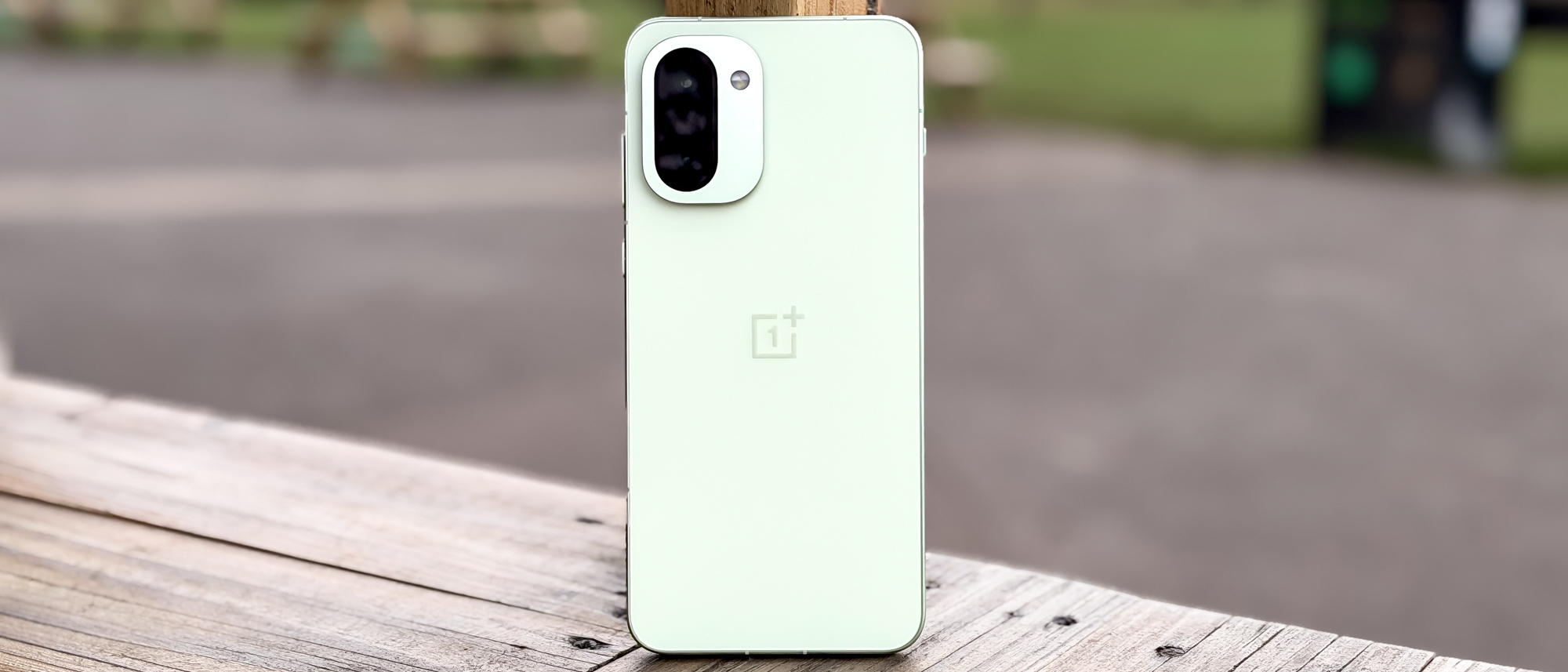What is Wi-Fi 7: Everything you need to know
This is how Wi-Fi 7 may make wired networks obsolete

As the next wireless standard, Wi-Fi 7 will soon find its way into the best Wi-Fi routers and the best mesh routers. Its predecessor, Wi-Fi 6E, has just really started to gain traction mostly due to how it impressed power users with its ability to deliver more than 2 gigabits per second (Gbps) of wireless data.
Wi-Fi 7 takes things a step further by combining three data bands, ultra-wide data channels and using multiple data channels together for even more throughput. This gives the next wireless standard the potential to usher in a new era of connectivity and reliability that could possibly push wired connections aside.
Picking up where Wi-Fi 6E left off, Wi-Fi 7 will incorporate many of the previous standard’s GHz-spectrum tricks while also adding a few of its own. This is everything you need to know about Wi-Fi 7.
What is Wi-Fi 7?
Technically known as Institute for Electrical and Electronic Engineering (IEEE) 802.11be, Wi-Fi 7 uses the 2.4, 5 and 6-GHz spectrum bands and has taken on the nickname "EHT" for Extremely High Throughput wireless.
The emerging Wi-Fi7 specification has the power to more than quadruple the total bandwidth that a wireless network is capable of. The details are almost finalized now, but Wi-Fi 7’s potential bandwidth will likely land somewhere between 30 and 40 Gbps.
This is several times more than the maximum 10GBase-T Ethernet standard of 10 Gbps and could tie Thunderbolt 4's ability to move 40 Gbps of data. The big difference is that Wi-Fi 7 will do it all without wires.
Wi-Fi 7 features and specs
In addition to new techniques to lower networking latency (the delay in networking response) and jitter (the variation in latency), the new spec seemingly has something for everyone. It includes supporting a greater density of connections, pushing higher spectrum efficiency and making Wi-Fi more reliable.
Get instant access to breaking news, the hottest reviews, great deals and helpful tips.
Although this seventh generation of Wi-Fi technology remains subject to change in the next couple of years as the IEEE 802.11be specification, hardware and software all get squared away, Wi-Fi 7’s main components and abilities are coming into focus.
The 160-MHz-wide data channel that's possible in Wi-Fi 6 (aka IEEE 802.11ax) can help satisfy the intense gamer at home as long as you have one of the best Wi-Fi 6 routers, but it's at the expense of tying up many of the more mundane 20-, 40- and 80-MHz-wide channels. (Wider channels can transport more data.)
Wi-Fi 6E doubled down on 160-MHz-wide data channels by adding the ability to tap into seven of such channels in the 6-GHz frequency band. If that's not enough, Wi-Fi 7 adds up to three 6-GHz-frequency data channels that are each 320 MHz wide and can move 2.4 Gbps each. (Here's a comparison of Wi-Fi 6 vs. Wi-Fi 6E.)
Wi-Fi 7: More streams, more devices, more antennas
The Wi-Fi 7 spec breaks new ground with Multi Link Operation (MLO), which is similar to the carrier aggregation that mobile phone providers use to increase data throughput by combining the abilities of separate channels.
According to Intel, MLO can raise data rates seven-fold while lowering latency and improving dependability because linked channels work in parallel.
While Wi-Fi 6 can handle up to eight independent streams of data, Wi-Fi 7 raises that to 16 spatial streams. It uses Coordinated Multiuser MIMO (CMU-MIMO), which is a big step up from Multi-User Multiple-Input, Multiple-Output (MU-MIMO).
This should satisfy the most demanding users while letting those around them do more mundane tasks, such as looking for recipes online or trading emails.
As if to further add to the alphabet soup aspect of Wi-Fi 7, the new spec uses a technique called Multi-User Resource Unit (MRU) to avoid interference. It allows selective puncturing of overlapping portions of the spectrum to let the data flow only on frequencies that are clear. It can help raise data rates and reliability in congested Wi-Fi environments, such as in an apartment building or a crowded office.
The secret sauce of how Wi-Fi 7 works is how the data gets put on and taken off the router's carrier waves, which is where Quadrature Amplitude Modulation (QAM) comes in. Instead of Wi-Fi 6's 1024-QAM, Wi-Fi 7 will increase the data density of the air waves by using the 4096-QAM technique. It should have the ability to shoehorn up to four times as much data into the same frequencies.
On the downside, the price to pay for adding all these Wi-Fi 7 transmission tricks is that the next generation of routers might need up twice as many antennas to funnel all those data streams in and out. With 12 antennas already gracing the inside of the Wi-Fi 6E-capable Netgear Nighthawk RAXE500, the next generation of routers run the risk of getting very crowded with two dozen or more antennas.
Wi-Fi 7: Breaking the 10 Gbps barrier
On the other hand, these antennas might be doubled up, hidden inside the router's case or used as a design element. as you can see with the current TP-Link Archer GT AXE11000's eight external antennas.
"The first generation of Wi-Fi 7 routers might be a bit big," said James Chen, associate vice president of product marketing at MediaTek, a maker of Wi-Fi chips. "But over time, they will look like a lot like what we use today."
Recently, MediaTek showed off alpha-level silicon for its upcoming Filogic line of Wi-Fi 7 chips to provide a sneak peek as to what's on the way. The new chips hit a peak throughput of roughly 10 Gbps in the demonstration, about four times what today's best routers are capable of.
With this much bandwidth on tap, Wi-Fi 7 could play a role as the data backbone for the home. They could make wired connections outdated while serving up enough data to be used for applications like very-high-resolution video streams and simulated worlds with virtual- and augmented-reality goggles.
"This is just the start," said MediaTek's Chen.
At the same time, we saw a number of interesting Wi-Fi 7 routers at CES 2023 and most will be available later this year.
Wi-Fi 7: High-speed internet plans required
To get the most out of Wi-Fi 7 home users will need to upgrade their data plans far beyond the 100-Mbps broadband that is the maximum offered by internet service providers in many areas. Otherwise, all that extra speed will be wasted, and your new router will be like a Ferrari trying to muscle its way through a mud bog.
While gigabit-per-second bandwidth will likely be a starting point, plans like the AT&T 5-Gbps fiber-optic service that is being rolled out fit nicely into the Wi-Fi 7 way of networking. Unfortunately, the AT&T 5-Gbps home service costs $180 a month — three times the cost of the average U.S. data plan.
"Having access to high-speed Internet will be key for Wi-Fi 7," adds MediaTek's Chen.
When will Wi-Fi 7 routers arrive?
The entire Wi-Fi 7 proposition depends on designing, manufacturing and testing the next generation of Wi-Fi chips. Expect the major chipmakers, including Broadcom, MediaTek, Qualcomm and others, to create their own circuits for bringing Wi-Fi 7 to reality in the best Wi-Fi routers and client devices such as phones, tablets and notebooks. Expect to see tri-band and quad-band designs for traditional routers and high-performance mesh kits.
Unfortunately, at a time when the world is starved for semiconductor products of all types, it might take longer than expected to get this generation of Wi-Fi technology off the CAD screen and to market. Look for the first Wi-Fi 7 products to appear sometime this year.
There might be a happy twist to the timing. Because of the lack of devices that can get the most out of Wi-Fi 6E, "some manufacturers could go around Wi-Fi 6E and go directly to Wi-Fi 7," offers MediaTek's Chen.
Although Wi-Fi 7 is expected to arrive early next year, TP-Link has already unveiled its first Wi-Fi 7 routers. The company has several Wi-Fi 7 routers currently in production including the Archer BE900, Archer BE800, Archer BE550, Archer GE800, Deco BE95, Deco BE65 and the Deco BE85. While most of the Archer devices are traditional routers, the Archer GE800 is a gaming router. Meanwhile, the new Deco devices will be TP-Link’s first mesh routers with Wi-Fi 7 support.

Anthony Spadafora is the managing editor for security and home office furniture at Tom’s Guide where he covers everything from data breaches to password managers and the best way to cover your whole home or business with Wi-Fi. He also reviews standing desks, office chairs and other home office accessories with a penchant for building desk setups. Before joining the team, Anthony wrote for ITProPortal while living in Korea and later for TechRadar Pro after moving back to the US. Based in Houston, Texas, when he’s not writing Anthony can be found tinkering with PCs and game consoles, managing cables and upgrading his smart home.
